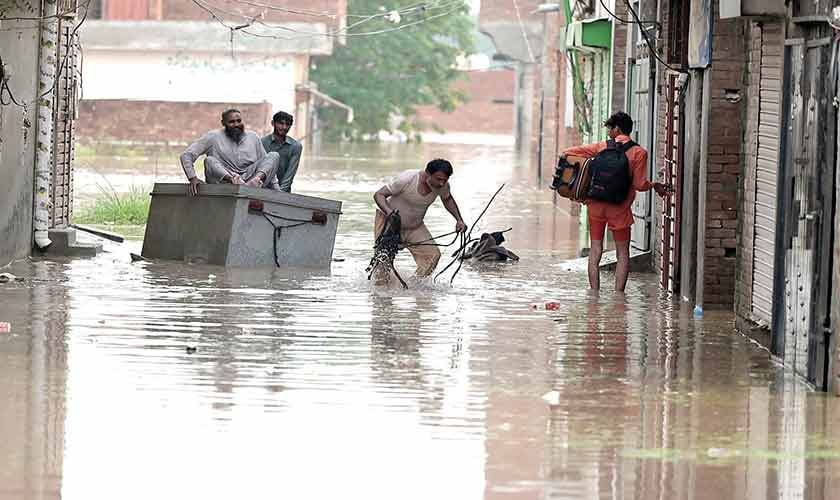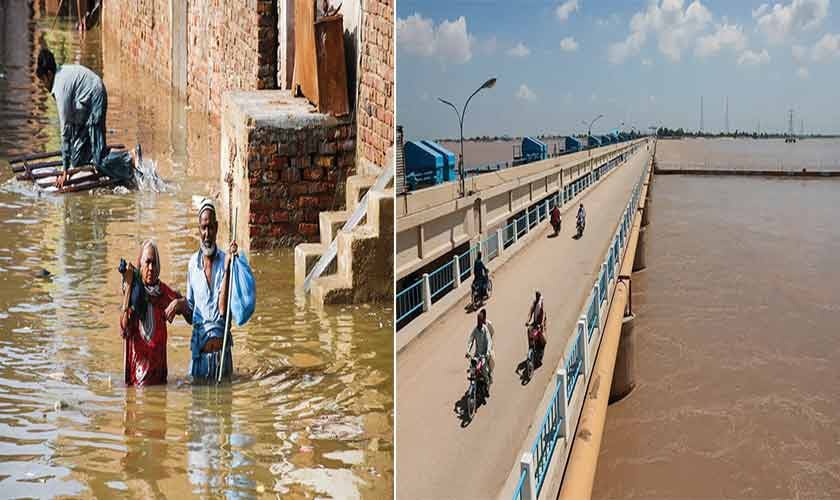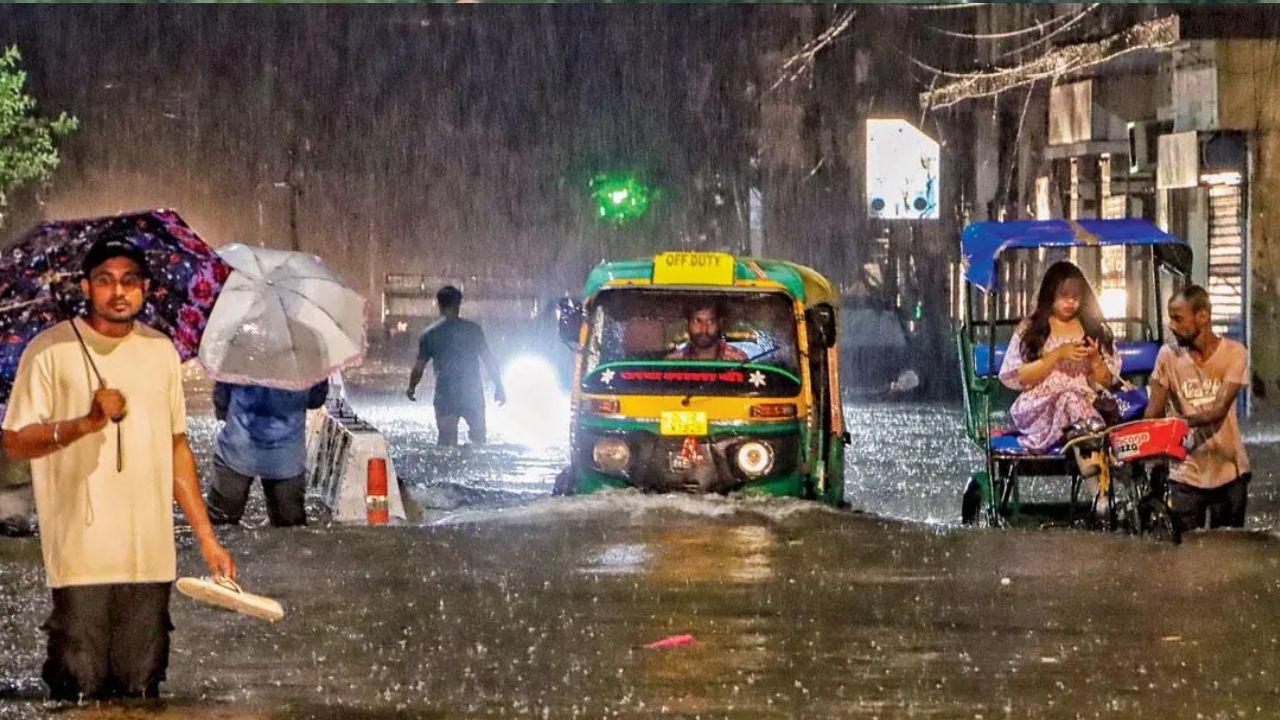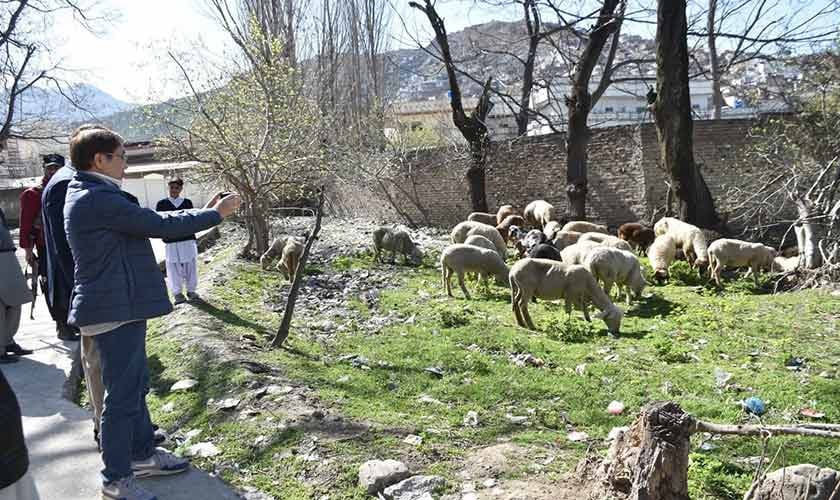In recent years, Lahore has experienced severe rains that have ravaged the city and its suburbs, especially the settlements along the banks of the Ravi River. This year was no different. A single cloudburst can decimate lives and properties, making urban flooding a recurring and critical issue.
For the Water and Sanitation Agency (WASA), this situation means a tremendous amount of work, to put it mildly. After heavy showers, parts of Lahore become inundated, turning some areas into no-go zones. Emergency workers are often needed to evacuate stranded residents as roads and streets become engulfed, drains overflow, and vehicles get submerged. In many places, wading through the water becomes a significant challenge.
Despite claims and promises made by some WASA officials, both past and present, the flooding crisis seems to have only deepened. Ghufran Ahmed, the incumbent WASA Managing Director, states that a host of initiatives have been launched to address the issue. He reveals that 52 schemes have been chalked out at an estimated cost of Rs 25.06 billion. Of these, 10 schemes—costing Rs 7.4 billion—focus on rainwater storage.
Old sewers that have surpassed their lifespan are being replaced through 26 schemes budgeted at Rs 9.16 billion. Additionally, six schemes aimed at replacing 55 outdated machines have a budget of Rs 1.70 billion. Another key project, the construction of the Haji Camp Drain, carries a budget of Rs 4.10 billion.
Ahmed also highlights an extensive development programme for Lahore that is kicking into gear. This programme covers 252 schemes with a total budget of Rs 41.35 billion. So far, Rs 21.05 billion have already been made available.
### Challenges and Infrastructure Development
The challenges faced by WASA are far from over. Mudasser Javed, Director of Planning and Engineering at WASA, explains that Lahore’s infrastructure is weak, and rapid urbanization has put immense pressure on the city’s drainage system. To combat these challenges, a Rs 49.27 billion project has been designed to build a trunk sewer in line with Lahore’s Master Plan.
This trunk sewer will be 28 kilometres long, with widths ranging from 5 to 12 feet, utilizing modern trenchless technology. The project also includes a disposal station capable of handling 600 cusecs of water. The proposal has been submitted to the Executive Committee of the National Economic Council (ECNEC) for approval, with funding expected from the Asian Infrastructure Investment Bank.
### Funding and Administrative Issues
Financing development projects remains a significant hurdle. According to documents provided by WASA, the monsoon grant has been frozen at Rs 425 million since 2017, hampering regular drain maintenance efforts. WASA has requested an enhancement of this grant to Rs 1 billion.
Other pressing issues include overlapping jurisdiction among multiple agencies responsible for water supply, sewerage, and drainage. This overlap causes confusion and delays. WASA has recommended that all these services be delegated to a single agency to streamline operations.
The problem of solid waste disposal into drains and sewers worsens flooding, necessitating strict enforcement to prevent such practices. Ahmed notes that Lahore’s 195 parks and open spaces are located on high ground, making them ineffective for rainwater storage. The solution, he suggests, is to lower these areas so they can function as holding spaces.
### Initiatives to Combat Urban Flooding
WASA has launched several initiatives to tackle the flooding problem. As mentioned earlier, 52 schemes have been outlined, including 10 focused on rainwater storage. Road gradients at many locations are poorly designed, leading to puddling and water stagnation. Road agencies have been directed to fix these issues by creating proper catch pits. Stray cattle also contribute to sanitation problems and need to be relocated.
In recent months, WASA has started lowering the ground levels of 140 parks. Of these, 66 parks are deemed high-priority, 43 medium priority, and 32 low priority. So far, work has been completed in 13 parks, is in progress in seven, and 120 remain pending. The plan is to keep the parks two feet below road level so that rainwater can naturally flow into them. Greenbelts are being lowered as well; out of 54 identified greenbelts, 41 have been declared high priority, 10 medium, and three low priority.
These efforts are beginning to show positive impacts. For instance, at Gol Bagh Park in Shadbagh, lowering the ground level by one foot reduced water ponding from six inches—which previously cleared in two hours—to three inches, clearing in one hour. In Subhan Park, Tajpura, lowering the ground by two feet eliminated ponding altogether, whereas previously six inches of water used to stagnate for three hours.
### WASA’s Drainage Network and Machinery
WASA oversees an extensive drainage system consisting of several large drains:
– Shalimar Escape Channel: 13.44 kilometres long; capacity of 1,000 cusecs
– Upper Chhota Ravi Drain: almost 5 kilometres; capacity of 1,480 cusecs
– Lower Chhota Ravi Drain: 5 kilometres; capacity of 100 cusecs
– Cantt Drain: nearly 29 kilometres; capacity of 1,340 cusecs
– Sattu Katla Drain: 17 kilometres; capacity of 800 cusecs
– Shahdara Drain: 7 kilometres; capacity of 260 cusecs
– Charrar Drain: 18 kilometres; capacity of 800 cusecs
Ahmed shares that WASA’s fleet comprises numerous mobile machines, including 40 suction machines, 56 dump trucks, 41 jet machines, 3 cranes, 24 water bowsers, 14 excavators, 134 dewatering sets, and 95 backhoe loaders and trolleys. Additional machinery is being acquired to bolster these resources.
### Master Plan 2050: A Vision for Lahore’s Flood Protection
At the heart of WASA’s proposals to shield Lahore from urban flooding lies the Master Plan 2050. This plan considers the city’s present and future, including projected vertical expansion. It aims to separate sewage from stormwater and eliminate the need for lift stations.
Ahmed believes that dedicated stormwater channels will function more effectively and prove resilient to climate change. In the dry season, these drains could be transformed into waterfronts for recreational use, adding to the city’s beauty. Improved drainage will also reduce air pollution caused by stagnant water.
The area served by WASA will expand from the current 248 square kilometres, which serves 8.7 million people, to 477 square kilometres, expected to serve up to 23.3 million people by 2050. Enhanced sewage treatment will help protect groundwater, improve aquatic life, and make communities more livable.
### Expert Insights and Recommendations
Urban planner Qaswar Abbas points out that local depressions in roads, unfinished road cuts, potholes, raised green belts, and missing gratings contribute significantly to the flooding problem. Outdated or missing infrastructure and the mixing of stormwater with sewage further compound these issues.
To address these challenges, Abbas suggests that WASA should increase rainwater storage in underground tanks and tunnels, utilize low-lying grounds and greenbelts effectively, and promote rainwater harvesting. He emphasizes that bylaws already exist and only require stricter enforcement to be effective.
—
Lahore’s battle against urban flooding is ongoing, but with focused initiatives, infrastructural investments, and coordinated governance, the city can look forward to a more resilient and flood-ready future.
https://www.thenews.com.pk/tns/detail/1345142-flood-money




